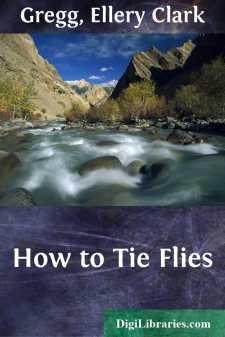Categories
- Antiques & Collectibles 13
- Architecture 36
- Art 48
- Bibles 22
- Biography & Autobiography 813
- Body, Mind & Spirit 142
- Business & Economics 28
- Children's Books 17
- Children's Fiction 14
- Computers 4
- Cooking 94
- Crafts & Hobbies 4
- Drama 346
- Education 46
- Family & Relationships 57
- Fiction 11829
- Games 19
- Gardening 17
- Health & Fitness 34
- History 1377
- House & Home 1
- Humor 147
- Juvenile Fiction 1873
- Juvenile Nonfiction 202
- Language Arts & Disciplines 88
- Law 16
- Literary Collections 686
- Literary Criticism 179
- Mathematics 13
- Medical 41
- Music 40
- Nature 179
- Non-Classifiable 1768
- Performing Arts 7
- Periodicals 1453
- Philosophy 64
- Photography 2
- Poetry 896
- Political Science 203
- Psychology 42
- Reference 154
- Religion 513
- Science 126
- Self-Help 84
- Social Science 81
- Sports & Recreation 34
- Study Aids 3
- Technology & Engineering 59
- Transportation 23
- Travel 463
- True Crime 29
How to Tie Flies
Categories:
Description:
Excerpt
INTRODUCTION
The object of this book will be throughout its entirety to teach in a practical manner the art of Fly Tying in all its branches. The principles used herein, and the methods of construction employed, are those used by the professional fly-tier who practices fly-making for the sake of art, and tries to achieve with each finished fly, a masterpiece.
None of the short-cuts employed by those whose business is quantity production will be attempted. Only the making of flies of the very highest quality and most durable construction will be attempted. In describing the principals of construction with the following illustrations, it will be impossible to describe in detail each standard pattern; however, it must be remembered that the fundamentals applying to each style of fly will be the principal bases of construction of all flies of that style, and that the use of different body materials, hackles, wings or size will simply change the pattern and not the fundamental points of construction.
Dressings for hundreds of standard patterns will be found fully described elsewhere in this book. For clearness {viii} of understanding please note that where a fly is described in this book as having grey wings, or red body, etc., and no particular feather or material is specified, it means that any feather or body material may be used. When a particular feather, body, hackle, tail, etc., must be used it will be so stated.
Each year a steadily increasing number of anglers are learning to tie their own flies. Not many years ago, there were few in America outside of professional tiers who understood the art. Now on each angling trip, at least one is sure to be met, who has discovered the great thrill of taking fish on flies of his own tying.
To those who are anticipating the making of their own flies for the first time, there is the opportunity to exercise one's ingenuity in the creation of new patterns. To prolong your fishing seasons throughout the long winter evenings, in the confines of your own den, where, with a supply of fur, feathers and tinsel, can be enjoyed a profitable, artistic and pleasant hobby. And the thrill of seeing in each finished imitation of Ephemeridae, Muscidae and Formicidae, a masterpiece to bring the joy of living and dreams of spring to the angler's heart.
Beginners are requested to reject any inclination to skip over the first part of this book, nor to attempt the tying of the more delicate and difficult dry flies before they have had sufficient preliminary training. {ix} This book is so written that the easier flies to make are the first encountered. Although you may not expect to use Bucktail Streamers, the fundamental principles employed in their construction, the knack of handling fur, feathers and tinsel, will be acquired, and a sense of proportion will be realized. I sincerely encourage you to begin at the beginning, and by careful and patient study the satisfactory result will be the ability to make flies that are second to none.
The illustrations in this book are all drawn to correct proportions except the tying silk, which is purposely drawn large for clearness of illustration....


